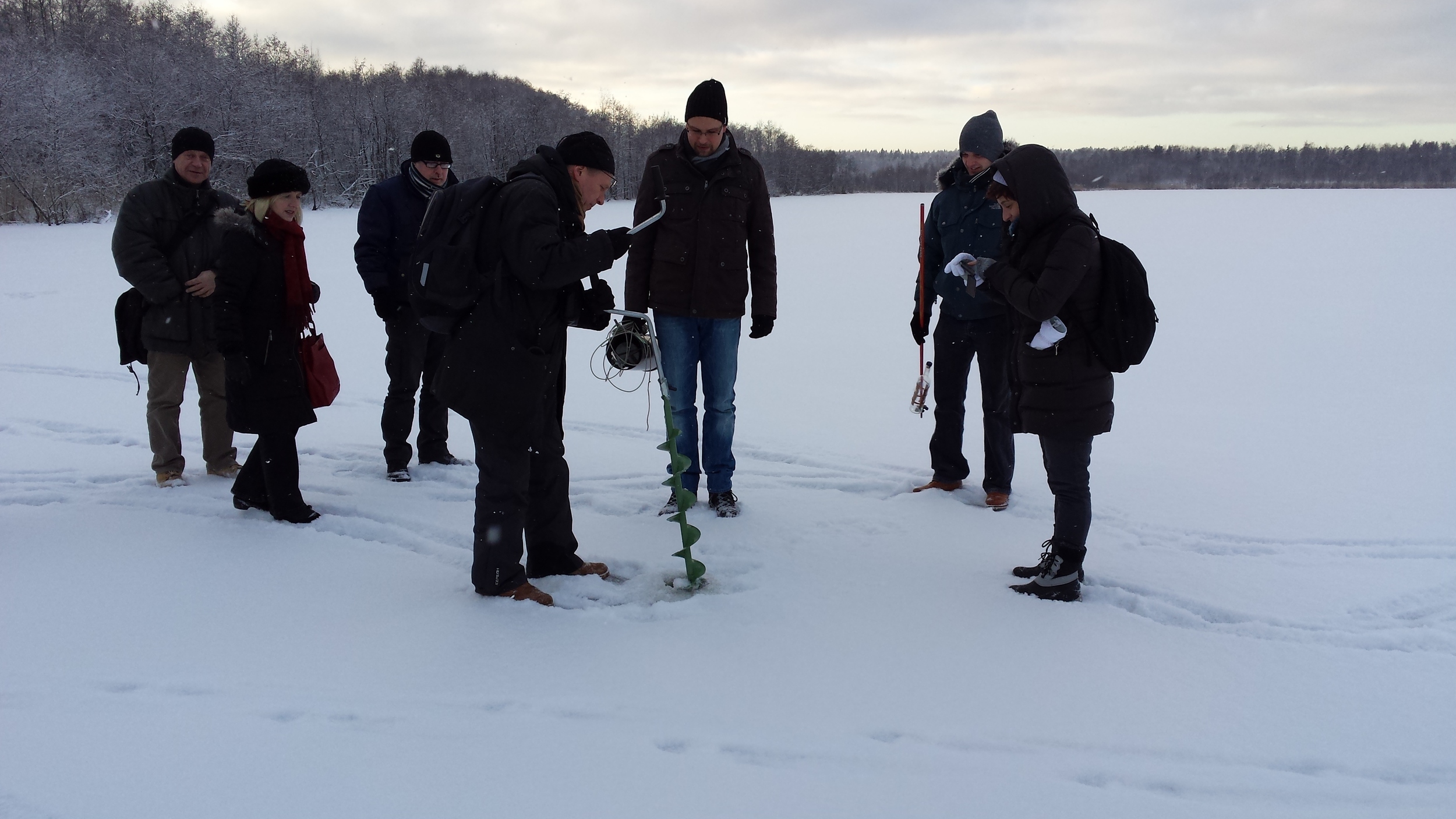 |
Home - About - Limnos Blog - Contact - Clients |
 |
Home - About - Limnos Blog - Contact - Clients |
Occasional musings on environmental matters and the work in hand - scroll down.

Citizen ScienceJuly 14, 2014
With the Atlantic Salmon Trust I have been developing what we are calling the Small Streams Characterisation System (AST-SSCS). This is aimed at catchment stakeholders - anglers, bird-watchers, land-owners, walkers, in fact anyone who takes an interest in the quality of their local rivers and streams. The characterisation of small streams that can potentially host spawning sea-trout is the key focus. Are they polluted? Are there physical blockages that prevent trout from passing upstream or downstream?
Ken Whelan and I presented a draft version of this new 'citizen science' system and tried it out in the field with a group attending the Irish International Fly Fair, held in Killyleagh on 5th and 6th July. The Small Streams Characterisation System begins with a net sample of a stream's insects and other aquatic invertebrates. We count up the number of different mayflies (three-tailed), stoneflies (two-tailed) and not forgetting cased and uncased caddis flies or sedges and then these are balanced against the more pollution tolerant types such as waterlouse, snails, and worms. The SSCS hinges on being able to count the number of different types within each of five groups - it is not necessary to be able to put an exact name on each species. The invertebrates re important as indicators of water quality - they have to survive in the water for most of the year and even occasional bouts of pollution will knock out the more sensitive species. By sampling across a catchment at accessible bridges a picture of water quality can be built up which can help to identify any 'hot-spots' on one or other side of the catchment under investigation.
Then any physical blockages e.g., at road culverts, are also assessed by the users in an attempt to identify stretches that prevent fish passage.
The abundance of plants and algae is also recorded - particularly the presence of excessive filamentous algae as an indication of enrichment.
The excellent and very positive feedback we received is now being assessed and a finalised version of the manual will be produced later in the year. We received great assistance from the Strangford-Lecale Partnership, The Annan River Trust in Scotland and of course the Dibney River Trust who run the Fly Fair.
The hope is that a system can be rolled out by which volunteers can assist in a very real way in characterising the smaller streams that are not usually included in the main monitoring programmes but nonetheless are important conduits for pollutants as well as providers of clean 'dilution' water - the capillaries of the river network. They are small but important, particularly as they account for almost 80% of the total river channel length.
The aim is to supplement the formal monitoring programmes of the official government bodies with some 'citizen science' help in pinpointing some of the more hard-to-find diffuse pollution problems and physical barriers impacting on sea-trout in particular.
|